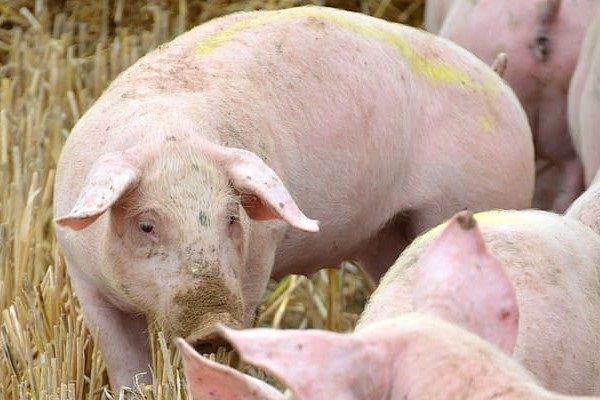Taking Pigs Through To Higher Weights
28 August 2020Average finishing weights have continued to increase steadily over the past two decades with average clean carcass weights rising from 74.1 kg to 84.9 kg from 2003 to 2019 (AHDB).
There are a number of reasons for this –
- Pig processing contracts have evolved over the years to take account of this along with consumer preferences.
- Modern genetics means that the increased carcass weights have been achieved with little or no increase in P2 (a measure of back fat) or fat cover.
- Pigs at these weights are now capable of ADLWG (Annual Daily Live Weight Gain) of over 1 kg per day so can readily turn feed into meat and even an extra week on farm can result in carcass weight increases of 5 kg. This increased level of performance has also seen finishing periods remain similar despite being taken to heavier weights.
- Rations by this point should be cheaper with reduced levels of more expensive proteins giving way to higher levels of cheaper cereals.
- Improved genetics and nutrition have meant that FCR (Feed Conversion Ratio) is not significantly poorer despite the heavier weights.
In the past it has been accepted that taking through pigs to higher finishing weights results in increased profitability due to increased margin over feed. Is this still the case?
The following needs to be known:
- Feed cost
- Feed used
- Average Daily Live Weight Gain (ADLWG)
- Killing Out % (KO%)
From this the Feed Conversion Ratio (FCR) and Margin over feed (MOF) can be calculated.
For example a producer currently taking through pigs to 110 kg liveweight (83.6 kg deadweight @ 76% KO%) with pigs growing at 1.05 kg/day has calculated the Average Daily Feed Intake (ADFI) to be 2.75 kg per day. The finisher ration costs £200/ton with the producer receiving 155p/kg. The effect of keeping the pigs an extra 5 days to 115.25 kg liveweight (87.6 kg deadweight) is shown below: –
| Per Pig | 1,000 Pigs | 10,000 Pigs | |
|---|---|---|---|
| ADFI | 2.75 kg | 2.75 tons | 27.5 tons |
| Feed cost/day | £0.55 | £550 | £5,500 |
| ADLWG | 1.05 kg | 1,050 kg | 10,500 kg |
| Killing out % | 76% | 76% | 76% |
| Meat yield per day | 0.798 kg | 798 kg | 7,980 kg |
| Increase in value per day | £1.24 | £1,237 | £12,369 |
| Margin over feed per day | £0.69 | £690 | £6,900 |
| Margin over feed for 5 additional days feeding | £3.45 | £3,450 | £34,500 |
From the above it can be seen that in this scenario there is an increase in margin over feed of £3.45 per pig by selling the pigs 5 days later. If the farm sells 10,000 pigs per year this results in an increased margin over feed of £34,500 for very little extra cost.
There are some considerations:
Contract – This assumes that the increased carcass weights are within contract specification along with fat levels.
Buildings – Does the farm have sufficient space and water to satisfy legislative/ farm assurance standards by keeping the pigs longer?
Overall herd – Even though the pigs are kept for a relatively short additional period does any increase in stocking density compromise the health or performance of the wider herd?
Mortality– Even where mortality is low there will some additional deaths over the course of the year.
FYM and Slurry – There will be a small amount of additional manure to store and handle.
Rent and Finance – Depending on the scale there may be additional shed rents or possibly capital and interest payments for any new accommodation.
As finishing weights have increased over the past 15-20 years so has herd performance with numbers sold per sow almost increasing by 50% to over 30 pigs per sow in some cases. This has seen any reductions in days to finish negated by an increased number of pigs coming through. With this in mind it is becoming much more important that any capital projects are future proofed to allow the future reproductive and growth potential of the modern pigs to be taken advantage of and ensure optimum performance and profitability.
George Chalmers, george.chalmers@sac.co.uk
Sign up to the FAS newsletter
Receive updates on news, events and publications from Scotland’s Farm Advisory Service

